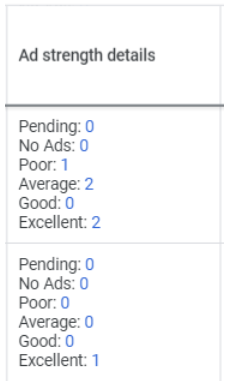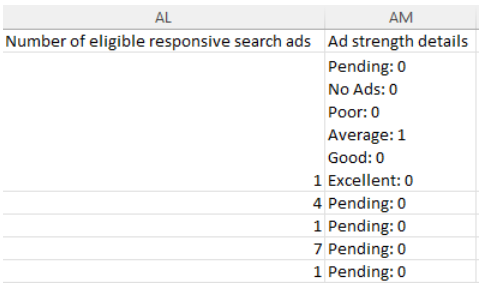
Holy Smokes! Google Ads’ Has New Columns
ROLL OUT ROLL OUT, Google introduces its new Setup feature within customised columns, giving new insights at the campaign and ad group level. The feature, identified by a Twitter user late last week, has been introduced across a few accounts without an announcement from Google.
See the Tweet here.
@rustybrick Barry it looks like Google Ads has added a new setup column to the ad groups column options pic.twitter.com/Xupo3tBM4b
— Steve Seeley (@SteveSeeley) September 7, 2022
The obvious question for this article is, why is this worth flagging?
The new feature primarily offers a topline view of the overall health of your account, giving users the ability to identify where your account could use some attention without the need to be at the keyword or ad level.
Within Setup, there are ten new column options to choose from:
- The number of eligible keywords
- Details on the strength ads
- The number of disapproved ads
- The number of eligible Images
- The number of eligible Responsive Search Ads
- The number of eligible ads
- Eligible Sitelinks (upgraded)
- Eligible site links (legacy)
- Eligible ad groups
- Disapproved keywords
Where we’ll focus this article is arguably the two most useful columns of Google Ads’ new feature: The number of disapproved Keywords and Ad strength details.
Disapproved Keywords:
The benefit of this new column cannot be understated. The ability to view the number of disapproved keywords at the campaign level provides an immediate steer into which campaign requires more obvious attention.
Whilst previously you were told that there were some keywords disapproved within a campaign, being given the total immediately should speed up how you prioritise your workload. In addition to this, Google provides a click-through option for the number of disapproved keywords, which will take you to the keyword level and apply the correct keyword status filter accordingly.
Do you have an example of how all this looks?
YES, how convenient a question…

As we can see from the screenshot, the account has a healthy number of eligible keywords across multiple campaigns. However, we can clearly see that there is one campaign which has a huge number of keywords which have been disapproved, providing us with a clear steer on where to focus our efforts.
Ad strength details:
This new column I would argue is by far the most useful of the platform’s latest updates. The column (shown below) identifies the number of ads which sit within each level of ad strength. Moreover, the feature allows you to drill down to the specific ads which require attention, filtering out those which are Excellent, good or average.

Have you identified any limitations?
Fancy that, we have an answer for this question too!

Unfortunately for us, there are still some practical limitations for the new google feature when it comes to pivoting the data. Most notably for Ad strength details. As seen below the data is pulled into one cell, and so to pull totals across the account can be very laborious for a one-off piece of analysis.

We also found that it doesn’t provide insights across all campaign types just yet. When reviewing one of our app campaigns (as seen below), we found that it was unable to provide any details on the strength of the ads.

Okay, but can you do ANYTHING clever with the data?
In the words of Churchill the dog, Ohhhh Yes.
As we see it there are two key bits of analysis you can do. The first, and most straightforward, is once your data is split out, totalling the ad strength of your campaigns. If your account has significantly more Poor rated ads, identifying and rectifying this can be a quick win for you and your client.
Secondly, and an arguably more interesting piece of analysis, is to segment your data over time. Assuming there have been changes to your ad strength over the given date range, you’ll be able to assess and demonstrate how a positive or negative change has impacted your core metrics.






